史上PostgreSQL从9.X到 11
PostgreSQL 从入门到精通
PostgreSQL从基本操作到应用技巧
PostgreSQL 安装与配置、数据库的基本操作、表的基本操作、数据类型和运算符、函数、数据的操作、索引、视图、触发器、事务和并发控制、用户管理、备份与还原、性能优化、高可用、负载均衡、数据复制、服务器配置与数据库监控、数据库内部结构等内容。
(推荐书单排名不分先后)
《深入浅出PostgreSQL 》

《PostgreSQL 11从入门到精通》
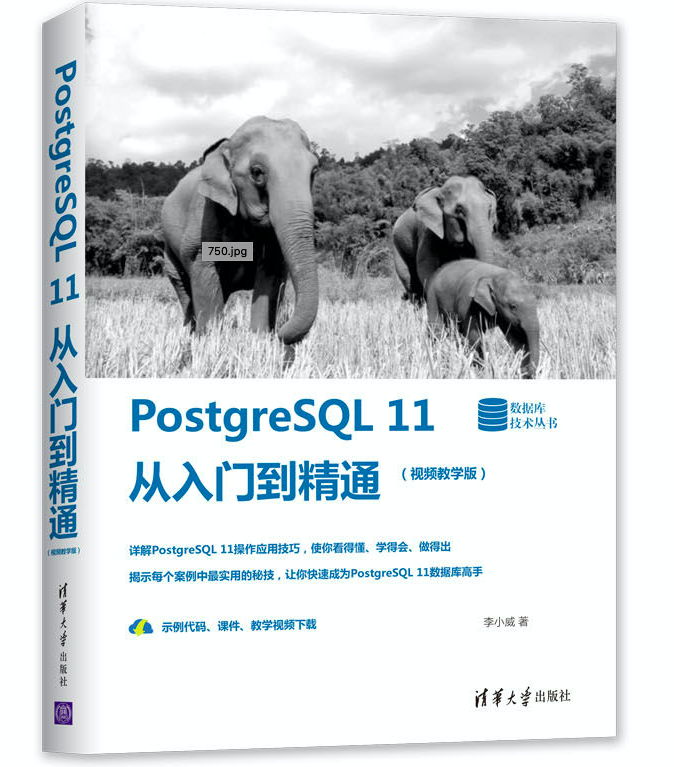
编辑推荐
本书是面向PostgreSQL数据库管理系统初学者的一本高质量的图书。目前国内PostgreSQL需求旺盛,各大知名企业高薪招聘技术能力强的PostgreSQL开发人员和管理人员。本书根据这样的需求,针对初学者量身定做,内容注重实战,通过实例的操作与分析,引领读者快速学习和掌握PostgreSQL设计和管理技术。
内容简介
该书注重实战操作,帮助读者循序渐进地掌握PostgreSQL11中的各项管理技术。
该书共有400多个实例,还有大量的经典习题。随书赠送了近20小时培训班形式的视频教学录像,详细讲解了书中每一个知识点和每一个数据库操作的方法和技巧,同时还提供了《PostgreSQL 11从入门到精通(视频教学版)/数据库技术丛书》所有例子的源代码,读者可以直接查看和调用。
《PostgreSQL 11从入门到精通(视频教学版)/数据库技术丛书》适合PostgreSQL数据库初学者、PostgreSQL数据库开发人员和PostgreSQL数据库管理员,同时也能作为高等院校和培训学校相关专业师生的教学用书。
作者简介
李小威,软件开发项目经理,在软件开发有多年的开发经验,尤其擅长Java、PHP、MySQL数据库、大数据分析等,具有很强的实战经验。对多种数据库系统有深入研究,在数据库管理与开发方面有着丰富的经验。并已出版过多本相关畅销书,颇受广大读者认可。
《PostgreSQL技术内幕:查询优化深度探索》

编辑推荐
《PostgreSQL技术内幕:查询优化深度探索》揭示了PostgreSQL数据库中查询优化的实现技术细节,首先对子查询提升、外连接消除、表达式预处理、谓词下推、连接顺序交换、等价类推理等逻辑优化方法进行了详细描述,然后结合统计信息、选择率、代价对扫描路径创建、路径搜索方法、连接路径建立、Non-SPJ路径建立、执行计划简化与生成等进行了深度探索,使读者对PostgreSQL数据库的查询优化器有深层次的了解。
内容简介
《PostgreSQL技术内幕:查询优化深度探索》适合数据库内核开发人员及相关领域的研究人员、数据库DBA、高等院校相关专业的本科生或者研究生阅读。
作者简介
张树杰 ,拥有13年IT从业经验,从事国产数据库内核开发工作多年,对数据库内核各个方面均有涉猎,近些年专注于研究如何改进分布式数据库的查询优化、查询执行,目前在Pivotal公司从事Apache HAWQ数据库的内核开发工作。
作为开源关系数据库领域先进技术的代表,PostgreSQL近年来受到越来越多人的关注,尤其是它的优化器,称得上是一种教科书式的实现。树杰的《PostgreSQL技术内幕:查询优化深度探索》全面解读了PostgreSQL优化器,从关系代数基本原理到PostgreSQL优化器实现中用到的主要数据结构及函数,都进行了准确细致的说明,同时条理清晰地描述了基于规则的查询改写、基于统计信息和代价计算的计划选择、动态规划算法、基因算法等。对于希望学习和深入了解PostgreSQL优化器的同学,本书是一本非常好的教材和参考书。
——蚂蚁金服基础数据部资深专家 蒋志勇
查询优化器是数据库的大脑,它生成的执行计划的优劣直接决定了数据库的性能。读者通过本书,可以深入理解和掌握PostgreSQL这个优秀开源数据库的优化器,更可以推而广之去理解和掌握其他数据库的优化器。在此基础上,如果能再去思考如何创新,那么本书作者的努力就得到超额回报了。
——京东云云数据库首席架构师 文继军
树杰是数据库内核研发领域的一个老兵,对数据库的内核实现有深刻的理解和认识,始终保持着对数据库技术的热情。本书是国内为数不多的介绍PostgreSQL数据库内核优化器的原创书籍,是作者多年工作经验的总结。正如作者所说, PostgreSQL的先进性体现在其强大的优化器实现上。本书详细介绍了PostgreSQL优化器从逻辑优化、物理优化、直至生成执行计划的各个阶段,结合实现的数据结构和关键代码深入浅出地介绍了优化器各个模块的实现原理及流程,层层剥茧,逐步揭开了查询优化的神秘面纱。
——天曦科技数据库事业部技术总监 王颖泽
PostgreSQL以其完善的功能、强大的性能、优秀的扩展性、系统的稳定性和良好的生态而著称,其中查询优化技术是核心的核心。我很高兴能有这样一本翔实的查询优化专业书籍问世。本书源自作者多年查询优化一线工作经验,不仅对总体架构把控到位,脉络清晰,分析深入,而且对关键的细节部分结合大量实例进行了详细阐述,非常符合工程师的需要。我强烈建议所有希望深度探索PostgreSQL查询优化或进行源码分析的朋友阅读本书,它非常值得你拥有!
——Pivotal中国研发中心工程总监 杨瑜
因为实现细节比较复杂,查询优化器是数据库中非常重要的模块之一,也是数据库中很难掌握的模块之一。本书作者通过深度分析PostgreSQL数据库查询优化器的关键源码,清晰地描绘了查询优化器的实现脉络,我相信读者阅读完本书后,对查询优化器不仅能知其然,更能知其所以然,且能够有逻辑、有条理、有思想地对数据库进行调优,真正做到“胸中有丘壑,眼里存山河”。
——阿里巴巴数据库事业部高级数据库专家 赵殿奎
《PostgreSQL即学即用》

编辑推荐
本书是实用的PostgreSQL快速上手指南,简明扼要地介绍了PostgreSQL核心概念与功能特性,可以帮助读者快速学习、理解并运用好这款开源数据库。
内容简介
除了用诸多示例重点演示如何实现在别的数据库中难以实现或者根本不可能实现的任务,作者还介绍了ANSI-SQL语法、外部数据封装器增强、全文检索函数和运算符、XML语法、逻辑复制等PostgreSQL 9.5之后版本的新增功能,充分展示了PostgreSQL作为全栈数据库的强大功能和企业级特性。
- 执行基本的数据库管理任务,比如角色管理、数据库创建、数据备份和恢复等;
- 使用psql命令行工具以及pgAdmin图形化管理工具;
- PostgreSQL的表、约束和索引等数据库对象的特性和使用方法;
- PostgreSQL所特有的若干功能强大的SQL语法;
- 使用多种不同的编程语言来编写PostgreSQL函数;
- 实施语句调优以充分挖掘服务器硬件的潜能;
- 通过外部数据封装器来查询多种多样的外部数据;
- 使用系统内置的复制筛选器复制数据。
本书将帮助你理解和使用 PostgreSQL 这一开源数据库系统。主要介绍 PostgreSQL 9.5、PostgreSQL 9.6 以及 PostgreSQL 10 的核心概念和功能特性,但也会涉及之前版本中一些独特的高级特性。你会发现 PostgreSQL 不只是个数据库系统,也是一个出色的应用平台。本书通过示例展示了如何实现在其他数据库中难以或不能完成的任务。
瑞金娜·奥贝(Regina Obe)是数据库咨询公司Paragon的负责人之一,在多种编程语言和数据库系统上有20多年的从业经验。她是PostGIS项目指导委员会成员,也是PostGIS核心开发团队的成员,还参与pgRouting和GEOS开发。
作者简介
利奥·徐(Leo Hsu)也是Paragon公司的负责人之一,曾为大大小小的组织开发过数据库,有20多年的从业经验。
《PostgreSQL修炼之道:从小工到专家 》

编辑推荐
PostgreSQL中国社区资深数据库专家、沃趣科技首席数据库架构师撰写,PostgreSQL数据库领域经典著作
系统讲解PostgreSQL技术内幕,深入分析PostgreSQL特色功能,包含大量来自实际生产环境的经典案例和经验总结
PostgreSQL数据库是目前功能最强大的开源数据库,它基本上包含其他所有商业或开源数据库中你能找到的功能(如函数索引、触发器、分析函数、自定义函数等),甚至一些商业数据库中没有的功能它也有(如表列的类型支持数组类型、JSON和JSONB类型,支持空间索引等)。它提供了最接近工业标准SQL92的SQL查询语言,并且正在实现新的功能以兼容全新的SQL标准:SQL:2011。它拥有完善的基于代价(COST)的查询优化器,支持“hash join”、“sort merge join”等功能,复杂的SQL语句仍然可以被正确高效地执行。本书将结合大量的实例和经验与您全方位探讨PostgreSQL数据库相关知识。
内容简介
《PostgreSQL修炼之道:从小工到专家》的主要内容和特色:
全面且实践性强:本书从SQL基础、安装配置、数据类型、数据库的逻辑结构等基础知识一直讲到PostgreSQL的架构、技术内幕、特色功能、Standby、数据库优化以及一些配套的开源软件的使用,覆盖了PostgreSQL领域方方面面的知识。几乎每章都有大量的示例和经验总结。
实用与特色兼顾:书中不仅介绍了与PostgreSQL配套的实用性很强的主流开源软件(如PgBouncer、Slony-I、Bucardo、PL/Proxy、pgpool-II、Postgres-XC),还针对PostgreSQL的特色功能(如规则系统、正则表达式、序列、GiST索引等内容)进行了总结。
PostgreSQL修炼之道:从小工到专家》是目前有关PostgreSQL数据库领域比较全面和系统的中文著作,内容十分丰富。全书共20章,分为四个部分。
准备篇(1~3章)针对PostgreSQL数据库的总体概况、安装配置步骤及SQL基础知识进行了介绍。基础篇(4~8章)的内容是为了帮助对PostgreSQL数据库不是很了解的读者打好基础。这部分介绍了psql工具的使用方法, PostgreSQL数据库的数据类型和数据库对象的操作方法,以及PostgreSQL数据库的架构和数据库服务的管理等知识。提高篇(9~13章)讲解PostgreSQL的执行计划、技术内幕及特色功能,最后还介绍了解数据库优化方法和PostgreSQL Standby数据库的搭建过程。若想早日成为PostgreSQL数据库高手,请仔细阅读这一部分内容。第三方开源软件及架构篇(14~20章)介绍PostgreSQL中最常用开源连接池软件PgBouncer、逻辑复制软件Slony-I、逻辑同步软件Bucardo、数据水平拆分功能的开源软件 PLProxy、数据库中间件软件pgpool-II、集群数据库软件Postgres-XC的使用方法。最后还介绍了与PostgreSQL数据库配套使用的一些开源软件和搭建各种实用的高可用方案方面的知识。
作者简介
唐成,拥有十几年数据库、操作系统、存储领域的工作经验。目前任沃趣科技首席数据库架构师,从事数据库高可用、高性能以及数据库云化等方面的研究工作。历任阿里巴巴数据库专家、高级数据库专家,从事过阿里巴巴的线上Oracle、Greenplum、PostgreSQL数据库的架构设计和运维工作,为阿里巴巴的PostgreSQL数据库的布道者,推动阿里云的关系型数据库服务(RDS)中提供PostgreSQL数据库服务,为阿里巴巴PostgreSQL数据库方面的技术带头人。也曾任网易杭州研究院开发专家,主导了网易云计算中的云硬盘产品(类似有EBS)的设计和开发。
《PostgreSQL实战》

编辑推荐
适读人群 :1.数据库开发人员。2.高校学生和教师。
这是一本值得存放于身旁的PostgreSQL参考书,特别是性能分析、集群、分片、地理信息等高技术含量的章节,可以作为日常工作的有效参考。本书基于新的PostgreSQL 10版本,重点在于通过实际操作为读者全方位解读PostgreSQL。从安装配置、连接使用、数据管理、体系架构,到NoSQL操作、性能优化、集群部署、分布式、分片、地理信息,面面俱到。
本书由数据库专业开发人员撰写,系统介绍PostgreSQL10的丰富特性,及其在生产实践运维中的技巧,全书分为基础篇、核心篇、进阶篇,共18章。基础篇包括第1~4章,主要介绍PostgreSQL基础知识,例如安装与配置、客户端工具、数据类型、SQL高级特性等,为读者阅读核心篇和进阶篇做好准备;核心篇包括第5-9章,主要介绍PostgreSQL核心内容,例如体系结构、并行查询、事务与并发控制、分区表等;进阶篇包括第10~18章,主要介绍PostgreSQL高级内容,例如性能优化、物理复制、逻辑复制、备份与恢复、高可用、版本升级、扩展模块、Oracle数据库迁移PostgreSQL实战、PostGIS等。
作者简介
谭峰 网名francs,中国开源软件推进联盟PostgreSQL分会特聘专家,《PostgreSQL 9 Administration Cookbook》译者之一,《PostgreSQL High Performance Cookbook》英文版技术审校者之一,曾在杭州斯凯网络科技有限公司从事PostgreSQL DBA一职六年。热忠于博客分享PostgreSQL经验,分享技术博客500余篇。现就职于浙江移动负责应用上云架构管控、资源分配以及私有云建设工作。
张文升 中国开源软件推进联盟PostgreSQL分会核心成员之一。常年活跃于PostgreSQL、MySQL、Redis等开源技术社区,坚持推动PostgreSQL在中国地区的发展,多次参与组织PostgreSQL全国用户大会。近年来致力于推动PostgreSQL在互联网企业的应用以及企业PostgreSQL培训与技术支持。
《PostgreSQL指南:内幕探索》
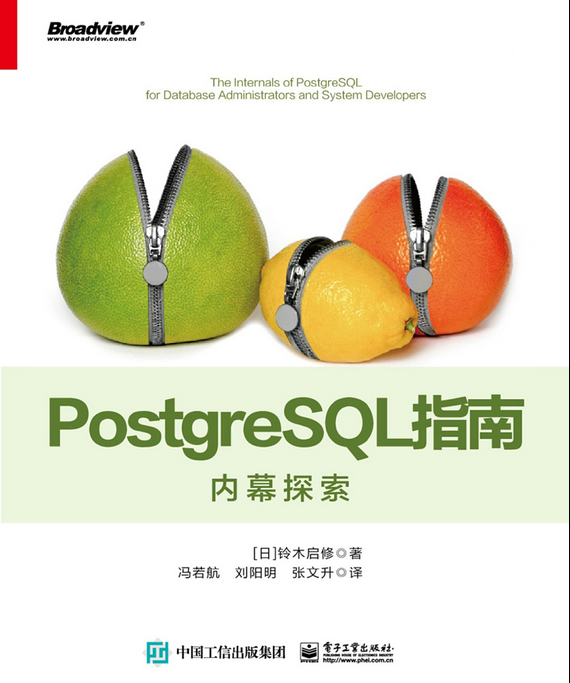
编辑推荐
适读人群 :中高级 PostgreSQL 数据库 DBA、PostgreSQL 内核开发者、以 PostgreSQL 为 基础数据库的应用系统研发人员。
内容简介
《PostgreSQL指南:内幕探索》深受PostgreSQL开发者瞩目,全面诠释了 PostgreSQL 数据库系统的整体架构及各个模块!
本书介绍了 PostgreSQL 内部的工作原理,包括数据库对象的逻辑组织与物理实现,进程与内存的架构。并依次剖析了几个重要的子系统:查询处理、外部数据包装器、并发控制、清理过程、缓冲 区管理、WAL、备份及流复制。本书为 DBA 与系统开发者提供了一幅全景概念地图,有助于读者形 成对数据库实现的整体认识,亦可作为深入学习 PostgreSQL 源代码的导读手册,对于理解数据库原 理与 PostgreSQL 内部实现大有裨益。 本书适合数据库开发人员及相关领域的研究人员、数据库 DBA 及高等院校相关专业的学生阅读。
作者简介
Hironobu Suzuki (铃木启修)
毕业于北海道大学信息工程研究生院,获得信息工程硕士学位,曾在多家公司担任软件开发人员和技术经理/技术主管。在数据库和系统集成领域出版了7本书。
2010年—2016年担任日本PostgreSQL用户组的主任,连续7年组织了日本PostgreSQL技术研讨会,并担任日本2013年PostgreSQL大会的委员会主席。
精彩书评
PostgreSQL作为一款学院派的数据库产品,对学习数据库实现原理有很好的教学意义。近些年来,其在商业场景中也获得越来越多的用户支持。该书对PostgreSQL若干个关键点进行了浅显易懂的讲解,相信能够对想要了解PostgreSQL数据库的人士有很大帮助。
—— 陈红
中国人民大学信息学院教授
从我接触和学习数据库开始,就非常希望了解每种数据库的内部运行或者实现机制。只有这样才能发挥每种数据库的价值。数据库从来就不是黑盒子,对于开发人员来说,了解数据库的内部机制,可以进行高效的应用设计,写出高性能的SQL语句;对于运维人员来说,可以针对性地进行性能优化,快速地对问题进行分析、定位和解决。这本书能够满足广大PostgreSQL数据库爱好者此方面的需求。感谢译者翻译如此有用的一本书,供国内的PostgreSQL从业者学习。
—— 汪洋
平安云数据库及存储产品团队总经理
介绍PostgreSQL内部机制的书较少,本书选取了几个关键的切入点,介绍了PostgreSQL的内部机制。本书特别适合有一定的PostgreSQL使用和管理经验的人士来梳理自己的知识脉络,从而达到“温故而知新”的效果。相信本书能够对PostgreSQL从业人士有所帮助。
—— 赵振平
太阳塔科技CTO
PostgreSQL中国社区主席
这是一本介绍PostgreSQL内部机制的好书,全面揭示了数据存储形式、进程架构、查询处理、并发控制等核心组件的奥秘,同时也覆盖了FDW、流复制等常用特性。本书译者之一张文升先生是我多年的好友,在PostgreSQL领域有深厚的经验积累,相信本书能为数据库从业者打开一扇通往PostgreSQL“内心”深处的门。
—— 彭煜伟(博士)
武汉大学计算机学院副教授
《PostgreSQL数据库内核分析》一书作者《由浅入深PostgreSQL》等书译者
本书系统地介绍了PostgreSQL体系架构和技术内幕,是一本不可多得的学习PostgreSQL内部原理的佳作。
—— 谭峰
《PostgreSQL实战》作者之一
《PostgreSQL指南:内幕探索》通过从用户使用较多的数据库、表结构操作基础,到高级DBA所需了解的方方面面,全面诠释了 PostgreSQL 数据库系统的整体架构及各个模块,通过图文并茂的方式进行清晰的解说。原作者Hironobu Suzuki及译者之一张文升分别是日本及中国 PostgreSQL 社区的核心成员,对于想要了解 PostgreSQL 内部结构的读者,这是一本十分值得品读的作品。
—— 萧少聪
PostgreSQL中国社区2015—2018届主席
《由浅入深PostgreSQL》

编辑推荐
本书根据一位资深PostgreSQL专家多年的从业经验,深入介绍了开源数据库管理系统PostgreSQL的主要特性,包括并发控制、索引、高级SQL处理、日志和统计、查询优化、存储过程、安全性、高可用等。本书原理讲解深入浅出,将官方手册中较难理解的内容简单明了地展示给读者。本书作者是具有18年PG(PostgreSQL)数据库经验的国外大牛。译者彭煜玮先生,武汉大学计算机学院副教授,PostgreSQL中国社区的核心成员,培养输出的数据库人才不计其数。本书适合数据库开发人员、DBA、数据分析师、架构师等。
内容简介
《由浅入深PostgreSQL》从一位资深PostgreSQL专家在多年咨询、技术支持工作中的切身体会出发,深入介绍了开源数据库管理系统PostgreSQL 9.6版本中的主要特性,其内容涵盖了作为一个PostgreSQL数据库从业人员经常会接触到的主题:事务和锁定、索引的使用、高级SQL处理、日志文件和统计信息、查询优化、存储过程、安全性、备份与恢复、复制、各类扩展、故障排查、系统迁移。作者通过亲身经历和直观的例子,详细介绍了PostgreSQL主要特性的工作原理、常用配置以及常见的误区,是一本实用性很强的PostgreSQL进阶指南,能帮助有一定PostgreSQL知识的读者深入了解PostgreSQL中更多更全面的高级特性。
《由浅入深PostgreSQL》适合数据库管理人员和开发人员了解和学习PostgreSQL。通过阅读该书,读者可以对PostgreSQL有一个全面透彻的了解。
作者简介
彭煜玮,男,2008年6月毕业于武汉大学并获得工学博士学位,现任武汉大学计算机学院副教授、硕士生导师。任中国计算机学会数据库专业委员会委员、ACM SIGMOD中国分部委员、PostgreSQL中国用户协会常务委员。长期从事数据库、大数据的教学和研究。著有《PostgreSQL数据库内核分析》一书,译著包括《PostgreSQL9.x之巅》《PostgreSQL文档》《Greenplum文档》等。
《PostgreSQL 9X之巅》

内容简介
本书从操作系统到数据库实现的多个层面,讲解了tgreSQL数据库进行常规性能调优的各个场景。无论对于从其他数据库转战tgreSQL的DBA还是使用过tgreSQL一段时间的DBA,它都是一本的参考资料。
作者简介
艾博拉·艾哈迈德(Ibrar Ahmed)是一家企业级PostgreSQL公司的高级数据库系统架构师。在从事开源开发之前,主要从事软件和嵌入式系统的开发工作,他也拥有[0大0]量的开源软件的开发[0经0]验。他是PostgreSQL社区的贡献者之一,同时也是其他开源社区的贡献者,比如谷歌的Chromium项目。他是一位开源软件的传播者,对开源开发的热情使得他为不同的开源社区贡献了数个意义非凡的特性。
艾博拉为了使PostgreSQL成为一个复合的关系型数据库做出了重要的贡献。他开发维护了多个PostgreSQL的扩展,用于与其他关系数据库交换数据,例如:MySQL、[0No0]SQL数据库、MongoDB和并行文件系统存储(如HDFS)。他还出版了另外一本书《PostgreSQL Developer’s Guide》,由Packt Publishing出版。
格利高里·[0史0]密斯(Gregory Smith)是南卡罗来纳州查尔斯顿的一位主要的PostgreSQL传播者,就职于Crunchy Data Solutions公司。他为制造业、金融和网络开发等行业的客户提供数据库咨询服务已[0经0]有20年之久了。
撰写本书是他讲授数据库性能调[0优0]方面的[0第0]二次尝试。他曾在1995年撰写了一本叫作《Progress Performance FAQ》的小型免费电子书,内容涵盖了如何使Progress 4GL及其相关的数据库运行得更快。在2001年,他转而专门使用PostgreSQL 7.0开发项目,从那时候起,他就开始关注PostgreSQL每个发行版本所能解决问题的复杂程度。
从PostgreSQL 8.3开始,Gregory对每个后来发行的PostgreSQL版本都做出了贡献,增加了一些额外功能。他同时为PostgreSQL编写了一系列附加工具集,这些工具包括pgtune、pgbench-tools、peg和2warm等。
审校者简介
丹尼尔·杜兰特(Daniel Durante)在不写程序的时候热衷于烘焙、[0品0]尝咖啡、骑摩托车、射箭、焊接和做木工。他从12岁就开始使用PHP、[0No0]de.js、Golang、Rust和C语言来编写网络和嵌入式程序。
他曾[0经0]开发了一款基于文本的浏览器游戏,已[0经0]有1·000·000个活跃玩家,为CNC [1机1] 床开发一个装箱问题(Bin-Packing)算[0法0],并贡献了一个古老的[0No0]de.js的ORM——Sequelize.js。
他还帮助审阅了Packt出版社出版的《PostgreSQL Developer’s Guide》一书。
在此我还想感谢我的父母、兄弟和朋友们,他们对我日夜守在电脑前的疯狂给予了[0大0]限度的容忍。如果没有他们的耐心、指导和爱,就不[0会0]有今天这本书。
译者简介
范翊,先后供职于海信、朗讯等公司,现任瀚高软件产[0品0]开发中心总[0经0]理。2005年毕业于英[0国0]伯明翰[0大0][0学0],获硕士[0学0]位,后于英[0国0]从事软件开发工作,具有丰富的项目[0经0]验。2015年回[0国0]后加入瀚高,带[0领0]研发团队从事瀚高数据库及其相关工具的研发工作。主要负责前言、[0第0]1~5章的翻译。
彭煜玮,武汉[0大0][0学0]副教授、硕士生导师,长期从事数据管理技术的教[0学0]和研究。著有《PostgreSQL数据库内核分析》一书。[0独0]立完成了PostgreSQL 9.3.4、9.4.4、9.5.0、9.6.0的文档翻译工作,并无偿捐献给社区。现任PostgreSQL中[0国0]用户协[0会0]常务委员、中[0国0]计算 [1机1] [0学0][0会0]数据库专业委员[0会0]委员、ACM SIGMOD中[0国0]分部委员。主要负责[0第0]9、10、12章的翻译。
唐成,杭州乘数科技有限公司CTO,《PostgreSQL修炼之道:从小工到专家》作者,专注于PostgreSQL数据库和Greenplum数据库[0领0]域,历任网易开发专家、阿里巴巴高级数据库专家。主要负责[0第0]6~8章和[0第0]15章的翻译。
黄坚,湖南红手指信息技术有限公CTO,从2011年开始,积[0极0]参与PostgreSQL数据库在[0国0]内的推广,是pgpool-II中文手册的维护者之一,《PostgreSQL 9 Administration Cookbook》的主要译者,常用网[0名0]:洞庭湖的泥鳅和Bambo。主要负责[0第0]11、16章的翻译。
郭凯,PostgreSQL社区志愿者,硕士期间曾从事PostgreSQL内核代码分析与研究。主要负责[0第0]13章的翻译。
王鹏,2013年6月毕业于南京[0大0][0学0],现就职于核工业北京地质研究院,主要从事多源地[0学0]信息数据集成与开发工作。主要负责[0第0]17章的翻译。
李飞,西安交通[0大0][0学0]网络信息中心教师、资深软件工程师,热爱编程,自2003年开始使用PostgreSQL,JFinal、Zbus等项目的贡献者。主要负责[0第0]14章的翻译。
杜金房,系统管理员/ DBA/架构师、FreeSWITCH中文社区创始人、《FreeSWITCH指南》作者、FreeSWITCH开源项目核心贡献者(Committer),精通PostgreSQL架构设计和[0优0]化技术。主要负责[0第0]18章的翻译。
周宝峰,瀚高软件北美研发中心总[0经0]理,致力于[0国0]际合作。与本书作者进行了深入的沟通,并在翻译的整体审校方面付出了[0极0][0大0]心血。
王硕,专注于PostgreSQL内核开发7年,致力于成为PostgreSQL数据库[0知0]识的布道者,并为[0国0]产基础软件添砖加瓦。
田兵,数据库内核开发工程师,长期从事PostgreSQL内核开发工作。
韩悦悦,文档工程师,PostgreSQL官方文档多个版本的中文翻译者。
李晓飞,测试工程师,电信行业外企工作10年,现就职于瀚高软件。
孙彪,数据库开发新生力量,目前正在系统[0学0]习PostgreSQL相关[0知0]识。
李鹏,数据库内核开发工程师,任何与PG内核开发相关的话题,欢迎与我交流讨论:sirlipeng@gmail.com。
王明军,开发工程师,喜欢编程和猫,希望世界和平。
贺冬,数据库DBA。每个人对原文的理解可能都不太相同,欢迎给我发邮件一起探讨:hedongfrank@163.com。
王刚,研究生接触到数据库底层[0知0]识,后参与数据库内核开发,喜欢探究底层 [1机1] 制,喜欢自由。
李冉,新晋开发工程师,协助此次翻译的审校工作。
《PostgreSQL 9.6从零开始学》

编辑推荐
PostgreSQL 是免费开源的对象关系型数据库管理系统,众多企业数据库的特性使之成为开源数据库中*可能用于商业化应用开发的一个。同时,PostgreSQL提供了众多的开发接口,非常方便开发人员的开发。
本书全面介绍PostgreSQL 9.6的安装与配置、库表的操作、SQL语言、函数、索引、事务和锁、视图、触发器、安全机制、备份与恢复、高可用、负载均衡、数据复制、服务器配置、数据库监控以及数据库内部结构等内容。
本书既适合PostgreSQL初学者和应用开发人员使用,也适合高等院校和培训学校相关专业的师生教学参考。
内容简介
本书循序渐进地介绍PostgreSQL 9.6数据库系统管理与开发的相关基础知识,并提供大量具体操作PostgreSQL 9.6数据库的示例。通过本书的学习,读者可以完整地掌握PostgreSQL 9.6的技术要点并具备系统管理与开发的基本技能。
全书共分为18章,主要内容包括PostgreSQL 9.6的安装与配置、数据库的基本操作、数据表的基本操作、SQL语言基础、轻松掌握SQL语句、认识函数、PostgreSQL查询、数据的更新、创建和使用索引、事务和锁、视图操作、触发器、PostgreSQL的安全机制、数据库的备份与还原、高可用、负载均衡、数据复制、服务器配置与数据库监控、内部结构等。同时,本书在大部分章节的后面提供典型习题,供读者操作练习,从而加深理解。
本书适合PostgreSQL 9.6数据库初学者学习,同时也适合想全面了解PostgreSQL 9.6的数据库系统管理与开发的人员阅读。
作者简介
李小威,软件开发项目经理,精通网站开发和windows程序开发,精通window桌面软件和网络编程,精通各种编程语言和数据库开发知识,具有多年实战开发经验。
《数据架构师的PostgreSQL修炼:高效设计、开发与维护数据库应》

作者简介
Jayadevan Maymala是一位数据库开发工程师、设计师和架构师。他开始于1999年在甲骨文(Oracle)公司的数据库部门工作。多年以来,他研究并使用过DB2、Sybase和SQL Server等数据库产[0品0]。 近,他一直致力于开源技术的研究。他选择的数据库是PostgreSQL。职业生涯中,他在不同的[0领0]域工作过,跨越供应链管理、金融和旅游等多个[0领0]域。他一方面致力于支持关键事务处理系统的数据库技术,另一方面致力于支持分析系统的数据仓库技术,在两方面工作上,他差不多花了等量的时间。
不研究这些开源技术时,他[0会0]利用业余时间进行[0大0]量阅读,并不断更新自己在经济和政治[0领0]域的[0知0]识。
我要感谢我的妻子——Uma,因为她可以忍受我在周末进行马拉松式的写作。我还要深深感激PostgreSQL社区,社区里面的人总是及时回复我的问题,不管是基础的还是特殊的问题。这是一个神奇的团队,他们一直不[0知0]疲倦地构建这样一个宏[0大0]的数据库,然后用这样的自由许可条款开源。谢谢他们!
审校者简介
Pascal Charest是前沿技术专家,他致力于一系列非常广泛的开源技术。在网络基础设施的战略规划[0领0]域,他是[0优0]秀的系统管理专家,并且经常从事系统架构设计的咨询工作。可以通过他LinkedIn的个人资料联系他http://www.linkedin.com/in/pascalcharest。
我想谢谢安东尼(Anthony)和扎卡里(Zachary),不管是白天或黑夜,他们都让我保持清醒。
Bahman Movaqar在过去的14年里一直在从事软件开发、部署和交付工作,从嵌入式操作系统到ERP系统实施。他是一个开源技术的信徒和热情的业余棋手。他的博客是http://bahmanm.com/。
我想感谢我可爱的妻子——Nahid,她教[0会0]我如何坚强。
Angelo Marcos Rigo自1998年以来一直致力于Web开发工作,并专注于内容管理系统。在过去的7年里,他一直管理、定制、开发Moodle LMS的扩展程序。可以在他的网站http://www.u4w.com.br/[0no0]vosite/index.php上向他咨询CMS或Moodle LMS相关问题。他曾经[0评0]审过Packt出版的《Moodle Security》一书。
我要感谢我的妻子Janaina de Souza和我的女儿Lorena Rigo,[0当0]我花时间[0评0]审这本书时,感谢他们的支持。
Hans-Jürgen Sch·nig在[0超0]过15年的时间里一直致力于PostgreSQL的专业培训、咨询和支持工作。他和他的公司Cybertec Sch·nig & Sch·nig GmbH(http://www.cybertec.at/)服务于全球的客户,曾完成世界上[0大0]的PostgreSQL部署工作。
Stéphane Wirtel是一个狂热的软件工匠,他的兴趣是软件的高可用性、复制和分布式系统。2000年以来,他一直在使用Python编程语言完成PostgreSQL下的工作。Stéphane在欧洲的一些[0会0]议上开展过几次Python和PostgreSQL演讲。后一个演讲被称为“Python & PostgreSQL,一场美好的婚礼”。他也是Odoo项目的核心开发者,并在这个项目上工作了6年之久。
Stéphane也是Python软件基金[0会0]和EuroPython[0学0][0会0][0会0]员。他通过布鲁塞尔的PythonFOSDEM活动推广Python编程语言。你可以在http://wirtel.be/或通过推特@matrixise找到他。
目前,他在Mgx.IO任职,这是一家专门从事Python和Erlang开发的公司。你可以在http://mgx.io/或通过推特@mgxio找到这家公司。他还[0评0]审了《Getting Started with PhantomJS》和《PhantomJS Cookbook》,这两本书均由Packt出版社出版。
我要感谢我的妻子Anne和我的女儿Margaux,以及我的家人和朋友的支持,同时也感谢PostgreSQL和Python社区的[0优0]秀工具。
内容简介
PostQreSQL是一个[0极0]其灵活且可靠的开源关系型数据库。借助它的这个神奇功能,你可以在不增加任何费用的情况下,使应用程序变得更加可靠和更具扩展性。一旦掌握了如何设置PostgreSQL并利用它的高级功能,你便可以节省工时,提高工作效率。
本书将教你如何构建及运行一个已[0优0]化的可扩展PostgreSQL服务器。
全书始于基本概念(例如,从源代码中安装PostgreSQL),并逐渐深入理论部分(例如,并发性和事务管理)。在此之后,你将[0学0]习如何设置副本、使用负载均衡进行水平扩展,以及排除故障。
后,你将接触到PostgreSQL生态系统中那些有用的工具,它们被用来分析PostgreSQL日志、设置负载均衡和进行数据恢复。
《PostgreSQL 9.0性能调校》
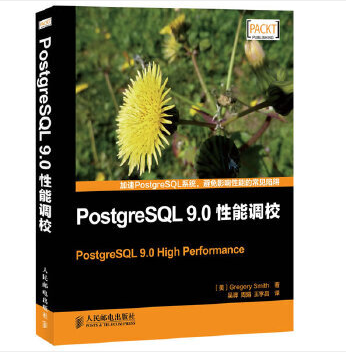
内容简介
PostgreSQL是一款功能强大而复杂的自由软件数据库系统,已经逐渐发展为一个为应用数据提供存储服务的日益成熟的数据库平台,并且获得越来越多的关注。 《PostgreSQL9.0性能调校》是针对PostgreSQL9.0的性能调校指南,能够帮助读者加速PostgreSQL系统,并且避免一些可能导致系统缓慢的常见缺陷。全书共分为16章,分别介绍了PostgreSQL的各个版本、数据库硬件环境和基准评测、磁盘设置、数据库高速缓存、服务器配置、日常维护、数据库索引、查询优化、数据库活动和统计信息、监控与趋势预测、池化与高速缓存、扩展复制、数据分区等性能调校的方方面面,后总结概括了应该避免的一些常见问题。 《PostgreSQL9.0性能调校》是涵盖了PostgreSQL 9.0性能调校和提升的各个话题,内容详尽,示例丰富,实用性强。《PostgreSQL9.0性能调校》适合PostgreSQL的高级数据库管理员、需要安装和使用PostgreSQL的技*人员以及对高级数据库内部构建和运作感兴趣的开发人员阅读。
作者简介
GregorySmith是国际数据库专业服务公司2ndQuadrant的首席顾问,并且是公司在美国的个办事处的创始人。编著PostgreSQL是他进军数据库性能调整教学领域的二个扩展。在1995年,Greg(格里格)写了一本较小的免费电子书《ProgressPerfor*nce FAQ》,主要内容是如何使Progress4GL和相关数据库能够运行更快。2001年,他专注于PostgreSQL7.0,一直关注复杂性问题,该数据库的发行版都能够解决这些问题。从PostgreSQL8.3开始,他对每个PostgreSQL版本都做出了贡献,添加附加的功能。他还为数据库编写了一些额外的工具集,目前包括有pgtune、pgbench-tools、peg和2warm等。
《PostgreSQL服务器编程》
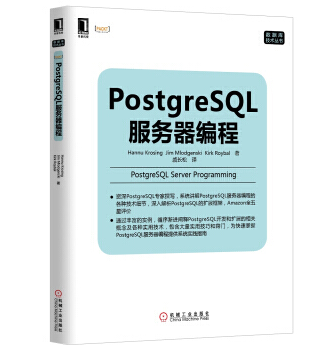
内容简介
《PostgreSQL服务器编程》由PostgreSQL专家撰写,系统讲解PostgreSQL服务器编程的方方面面,全五星评价。书中通过丰富的实例,循序渐进阐释PostgreSQL开发和扩展的相关概念及各种实用技*,包大量实用技巧和窍门,为快速掌握PostgreSQL服务器编程提供系统实践指南。
《PostgreSQL服务器编程》共10章:章介绍PostgreSQL服务器编程的性能;2章从PostgreSQL的商业与技*优势等角度讨论PostgreSQL的开发环境;3章介绍个PL/pgSQL函数,涵盖其基础结构和关键组成部分;4章介绍返回结构化数据的功能,并展示如何将复杂数据返回给一个应用程序;5章通过一些相关案例探究PL/pgSQL触发器函数;6章展示如何对服务器端程序进行调试;7章介绍如何使用Python进行服务器端开发;8章深入探讨如何使用原生的C代码进行PostgreSQL扩展;9章主要阐述如何通过PL/Proxy扩展数据库;0章讨论PostgreSQL扩展程序网络架构,包括如何将代码模块发布到开源社区。
PostgreSQL可以为你提供所有在你擅长的开发语言中可以实现的功能,并且可以在数据库服务器上扩展这些功能。在蓬勃发展的商业市场中,如果你掌握了足够的PostgreSQL相关知识,你将有能力应对当前人才市场对高级PostgreSQL技能的强烈需求。
《PostgreSQL服务器编程》将向你展示出PostgreSQL远远不止是一个数据库服务器。实际上,它是一个应用程序开发框架,这种框架的优势在于其具备事务支持、大量数据存储、日志系统、恢复等功能,以及许多PostgreSQL引擎提供的特性。
《PostgreSQL服务器编程》将带你学习PostgreSQL函数的基础部分。在学习过程中,你将会使用各种程序语言(不限于自带的PL/pgSQL语言)进行函数的编写。
通过阅读本书,你将学到:
编写函数并创建你自己的数据类型,所有这些都可以用你擅长的编程语言实现。
使用内置的PL/pgSQL编程语言,编写和调试函数与触发器。
从外部数据源抽取数据。
安装与管理扩展应用,创建与发布你自己的扩展应用。
决定你的程序将使用什么样的硬件资源。
如何使用你自己的开发语言来扩展数据库内核,使其拥有你自己的特性。
作者简介
Hannu Kosing,Skype公司位数据库管理员与数据库架构师。2006年离开Skype之后,他成为2ndQuadrant公司的首席PostgreSQL咨询顾问,足迹遍布全球各地。Hannu自1995年开始使用PostgreSQL,有近20年的PostgreSQL实战经验。
Jim Mlodgens,kiOpenSCG公司CTO,OpenSCG是一家专注于开源技*的专业服务公司。他还曾是StormDB的CEO,StormDB是一家致力于*平扩展的云数据库公司。在加入StormDB之前,Jim是CirrusTechnology、EnterpriseDB和FusionTechnology等公司的研发工程师。Jim非常拥护PostgreSQL,他是美国PostgreSQL协会的董事会成员,同时也是纽约PostgreSQL用户组和费城PostgreSQL用户组的重要成员。
Kirk Roybal,从1998年开始就活跃于PostgreSQL社区。他帮助建立了休斯敦、达拉斯、伯明顿等地区的PostgreSQL用户组。他在报告系统、商业智能、数据仓库、应用程序开发等领域均提供了的PostgreSQL解决方案。
译者简介
戚长松拥有浙江大学机械工程硕士学位,专注于企业数据库开发与基于数据库的应用程序设计,拥有近10年的数据库开发经验及5年的PostgreSQL实战经验,擅长基于PostgreSQL平台进行数据仓库建模与数据挖掘。
《PostgreSQL 数据库内核分析》
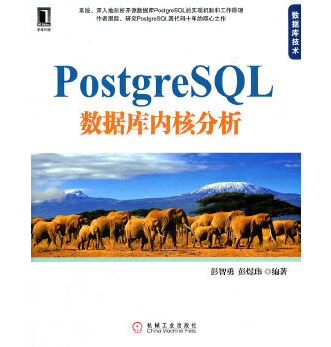
内容提要
postgresql是目前广泛应用的开源数据库管理系统。《PostgreSQL数据库内核分析》从postgresql数据库的源代码入手,深入分析了该数据库管理系统的底层实现细节,揭示了数据库运行的基本原理。《PostgreSQL数据库内核分析》的主要内容包括:postgresql数据库的体系结构、存储管理、索引机制、查询编译、查询执行、并发控制机制以及安全等。每个主题都引用了大量的数据结构、图表等进行说明,使读者对实现过程和机理一目了然。
《postgresql数据库内核分析》适合从事数据库领域相关研究的技*人员、高等院校相关专业高年级本科生或研究生阅读,有助于读者进行数据库的高级开发、基于postgresql定制满足需求的数据库系统,或者在数据库内核中实现并验证数据库新技*。
作者简介
彭煜玮,男,2008年6月毕业于武汉大学并获得工学博士学位,现任武汉大学计算机学院副教授、硕士生导师。任中国计算机学会数据库专业委员会委员、ACM SIGMOD中国分部委员、PostgreSQL中国用户协会常务委员。长期从事数据库、大数据的教学和研究。著有《PostgreSQL数据库内核分析》一书,译著包括《PostgreSQL9.x之巅》《PostgreSQL文档》《Greenplum文档》等。
《PostgreSQL 9 Administration Cookbook》
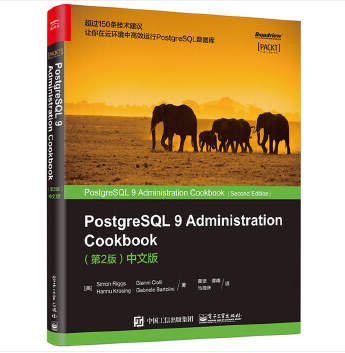
内容简介
本书提供了在线生产环境的PostgreSQL数据库的常见问题和故障快速解答,这些都基于作者作为PostgreSQL数据库培训师、用户和核心开发人员时的经验积累。每个技*都被拆分为小的方法或建议,先给出包可工作代码的演示解决方案,然后解释这样做的原因及工作原理。本书意在成为新用户和技*专家的桌面参考手册。本书涵盖了PostgreSQL 9 所有的新功能。
作者简介
(美)西蒙.里格斯,贾尼.乔里,汉努.克劳辛,加
Simon Riggs 是2ndQuadrant 的CTO,PostgreSQL 社区活跃的代码提交者。作为PostgreSQL 的主要开发人员,他为PostgreSQL 的贡献超过十年时间,期间,他为每个发行版本都设计开发了很多新功能。他擅长的领域包括复制、性能调优、商业智能、管理和安全。在他的领导下,2ndQuadrant 现在已经成为开源PostgreSQL 的领导开发者和PostgreSQL 项目的白金赞助商,并广泛服务于欧美、亚太、中东和非洲地区成百上千的用户。
Simon 在很多交流会上都是活跃的发言者,并因在PostgreSQL 功能和复制方面的发言而被广泛知晓。作为多种数据库的开发工程师、架构师、数据分析师和系统设计师,他在近三十年间为遍布欧美的公司提供过服务。
Gianni Ciolli 是2ndQuadrant 意大利分公司的首席咨询师,从2008 年开始就从事开发、咨询和培训工作。他在欧洲和海外的PostgreSQL 峰会中都有发言,他还擅长于函数语言和符号计算(Symbolic Computing)等IT 技能。
Gianni 拥有数学博士学位,并在代数几何、理论物理和形式证明理论方面发表过研究报告。他之前在佛罗伦萨大学任教师和研究员。
Gianni 在自由软件和开源软件领域工作了近二十年。在2001 到2004 年期间,他是PLUG(Pr*o Linux User Group)公司的联合创始人和总裁。他曾多次组织意大利的PostgreSQL 交流大会,在2013 年,他获选加入ITPUG(Italian PostgreSQL Use* Group)董事会。
现在,他和他的儿子居住在伦敦。他兴趣广泛,主要包括音乐、戏剧、诗歌,尤其喜欢体育竞技,他还参加过全能竞赛。
Hannu Krosing 是2ndQuadrant 的首席咨询师以及Ambient Sound Investments 的技*顾问。作为Skype 公司的初数据库架构师,他负责设计了用于复制和扩展技*的SkyTools套件,为PostgreSQL 项目工作和贡献十二余年。
Gabriele Bartolini 是一个开源开发人员,2ndQuadrant 首席咨询师, 国际PostgreSQL 社区的活跃成员。
Gabriele 拥有佛罗伦萨大学的统计学学位。他擅长于数据挖掘和数据仓库,在澳大利亚和意大利从事过网页流量分析工作。
他现在居住于普拉托(Pr*o),一个位于意大利托斯卡纳(Tuscany)地区北部的小而充满活力的城市。他的另一个家位于澳大利亚的墨尔本,他在那里的莫纳什大学学习,并在那里的信息通信行业工作。
Gabriele 的兴趣包括演奏他的Fender Str*ocaster 电吉他,以及踢卡尔乔(calcio)足球联赛。
《PostgreSQL查询引擎源码技术探析》

内容简介
PostgreSQL作为当今优选的开源关系型数据库,本书揭示tgreSQL查询引擎运行原理和实现技术细节,其中包括:基础数据结构;SQL词法语法分析及查询语法树;查询分析及查询重写;子连接及子查询处理;查询访问路径创建;查询计划生成,等等。以深入浅出的方式讨论每个主题并结合基础数据结构、图表、源码等对所讨论的主题进行详细分析,以使读者对tgreSQL查询引擎的运行机制及实现细节能有全面且深入的认识。
作者简介
李浩 著
李浩,具有多年软件开发经验,现任职于北大方正信息产业集团基础软件中心(上海)担任数据库架构师,主要负责查询引擎查询优化方面工作。曾参与方正智睿系列数据库研发,主要负责查询引擎模块的设计和开发,并拥有数十项发明。主要研究兴趣包括:查询引擎、大规模并行处理系统(MPP)及SQL on Hadoop相关系统。
《开源GIS与空间数据库实战教程》

内容提要
本书以开源GIS软件和开源空间数据库PostgreSQL为主要内容,特别是以空间数据库PostgreSQL为中心,以OGC标准为主线,详细介PostgreSQL、QGIS、GeoServer等开源软件及其应用案例。全书分为8章,章对空间数据库的发展状况进行介绍和分析;第2章简单介绍开源GIS软件和空间数据库PostgreSQL的初步使用;第3章介绍空间数据库的SQL Geometry数据类型;第4章介绍矢量数据空间SQL查询与分析操作;第5章介绍栅格数据空间SQL查询与分析操作;第6章介绍利用QGIS、ArcMap对空间数据库进行管理以及利用GeoServer发布空间信息;第7章分别介绍利用Java和C#对空间数据库进行管理和操作;第8章以案例的方式介绍利用开源软件和开源空间数据库在“智慧林业”中的应用。 本书主要针对于教学科研和工程应用,特别对开源GIS和空间数据库的理论推广和工程项目应用具有重要的应用价值;本书主要适合于地理信息、林业、交通应用、测绘等与地学相关领域的从业人员。
《PostgreSQL 9从零开始学》
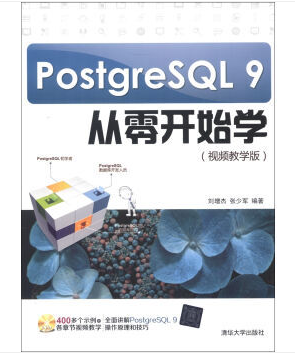
内容简介
PostgreSQL9是一个开源的、全功能的对象关系型数据库。《PostgreSQL 9从零开始学(视频教学版)(附DVD-ROM光盘1张)》循序渐进地介绍了PostgreSQL9数据库应用与开发的相关基础知识,提供了大量具体操作PostgreSQL9数据库的示例,供读者实践。书中每节都清晰地阐述了代码如何工作及实现方法,使读者能在最短的时间内有效地掌握PostgreSQL9的应用技能。
全书共18章,分别介绍了PostgreSQL9的安装与配置、数据库的基本操作、数据表的基本操作、SQL语言基础、轻松掌握SQL语句、认识函数、PostgeSQL数据查询、数据的更新、创建和使用索引、事务和锁、视图操作、触发器、PostgreSQL的安全机制、数据库的备份与恢复、高可用、负载均衡、数据复制、服务器配置、数据库监控以及数据库的内部结构等内容。
《PostgreSQL 必备参考手册 》
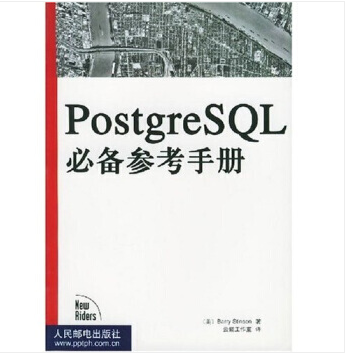
内容简介
本书对关系数据库管理系统(RDBMS)PostgreSQL进行了全方位的介绍。
全书分为五个部分。部分(章)列出了PostgreSQL 7.1版本支持的所有SQL命令。二部分(2章到5章)介绍了PostgreSQL的数据类型、作符及函数等内容。三部分(6章到0章)通过介绍用户可执行文件、系统可执行文件、系统配置文件与库及日志文件等帮助用户轻松管理PostgreSQL。四部分(1章到4章)讲授了PostgreSQL的编程知识,包括服务器端编程、客户端编程、创建自定义函数及其他高级PostgreSQL编程技巧。五部分(附录A、附录B)提供了丰富的PostgreSQL参考资源及PostgreSQL历年版本信息。
本书适合PostgreSQL程序员阅读,也可以供数据库系统管理员参考。
《Mastering PostgreSQL 11》

Master the capabilities of PostgreSQL 11 to efficiently manage and maintain your database
Key Features
Master advanced concepts of PostgreSQL 11 with real-world datasets and examples
Explore query parallelism, data replication, and database performance while working with larger datasets
Extend the functionalities of your PostgreSQL instance to suit your organization’s needs with minimal effort
Book Description
This second edition of Mastering PostgreSQL 11 helps you build dynamic database solutions for enterprise applications using the latest release of PostgreSQL, which enables database analysts to design both the physical and technical aspects of the system architecture with ease.
This book begins with an introduction to the newly released features in PostgreSQL 11 to help you build efficient and fault-tolerant PostgreSQL applications. You’ll examine all of the advanced aspects of PostgreSQL in detail, including logical replication, database clusters, performance tuning, monitoring, and user management. You will also work with the PostgreSQL optimizer, configuring PostgreSQL for high speed, and see how to move from Oracle to PostgreSQL. As you progress through the chapters, you will cover transactions, locking, indexes, and optimizing queries to improve performance. Additionally, you’ll learn to manage network security and explore backups and replications, while understanding the useful extensions of PostgreSQL so that you can optimize the speed and performance of large databases.
By the end of this book, you will be able to use your database to its utmost capacity by implementing advanced administrative tasks with ease.
What you will learn
Get to grips with advanced PostgreSQL 11 features and SQL functions
Make use of the indexing features in PostgreSQL and fine-tune the performance of your queries
Work with stored procedures and manage backup and recovery
Master replication and failover techniques
Troubleshoot your PostgreSQL instance for solutions to common and not-so-common problems
Perform database migration from MySQL and Oracle to PostgreSQL with ease
Who this book is for
This book is for data and database professionals wanting to implement advanced functionalities and master complex administrative tasks with PostgreSQL 11. Prior experience of database administration with PostgreSQL database will aid in understanding the concepts covered in this book.
Table of Contents
PostgreSQL Overview
Understanding Transactions and Locking
Making Use of Indexes
Handling Advanced SQL
Log Files and System Statistics
Optimizing Queries for Good Performance
Writing Stored Procedures
Managing PostgreSQL Security
Handling Backup and Recovery
Making Sense of Backups and Replication
Deciding on Useful Extensions
Troubleshooting PostgreSQL
Migrating to PostgreSQL
《PostgreSQL 11 Administration Cookbook》
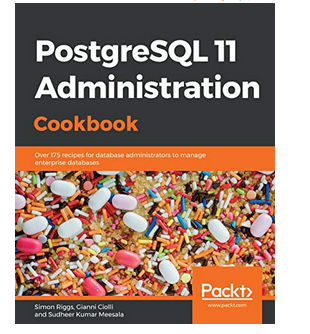
A practical guide to administering, monitoring and replicating your PostgreSQL 11 database
Key Features
Learn and apply the newly introduced features in PostgreSQL 11
Tackle any problem in PostgreSQL 11 administration and management
Discover expert techniques for monitoring, fine-tuning, and securing your database
Book Description
PostgreSQL is a powerful, open source database management system with an enviable reputation for high performance and stability. With many new features in its arsenal, PostgreSQL 11 allows you to scale up your PostgreSQL infrastructure. This book takes a step-by-step, recipe-based approach to effective PostgreSQL administration.
Firstly, you'll understand how to control crash recovery and plan backups by working through new features such as logical replication, native table partitioning, and additional query parallelism. You will also learn how to tackle a variety of problems and pain points that database administrators often face including creating tables, managing views, improving performance, and securing your database. As you make steady progress, the book will draw attention to important topics such as monitoring roles, backup, and recovery of your PostgreSQL 11 database. This will help you to gain insights into roles and produce a summary of log files, which will in turn ensure high availability, concurrency, and replication.
By the end of this book, you will have the skills you need to manage your PostgreSQL 11 database efficiently.
What you will learn
Troubleshoot open source PostgreSQL version 11 on various platforms
Deploy best practices for planning and designing live databases
Select and implement robust backup and recovery techniques in PostgreSQL 11
Use pgAdmin or OmniDB to perform database administrator (DBA) tasks
Adopt efficient replication and high availability techniques in PostgreSQL
Improve the performance of your PostgreSQL solution
Who this book is for
This intermediate-level book is ideal for database administrators, data architects, database developers, or anyone with an interest in planning and running live production databases using PostgreSQL 11. The book will also prove useful if you're looking for hands-on solutions to problems associated with PostgreSQL11 administration. Some experience with handling PostgreSQL databases will be beneficial.
Table of Contents
First Steps
Exploring the Database
Configuration
Server Control
Tables and Data
Security
Database Administration
Monitoring and Diagnosis
Regular Maintenance
Performance and Concurrency
Backup and Recovery
Replication and Upgrades
《PostgreSQL 11 Server Side Programming Quick Start Guide》
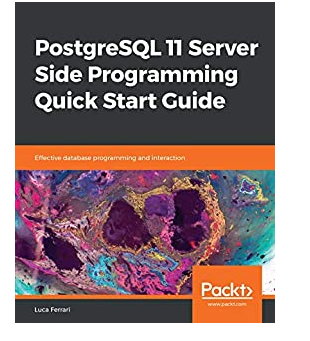
Extend PostgreSQL using PostgreSQL server programming to create, test, debug, and optimize a range of user-defined functions in your favorite programming language
Key Features
Learn the concepts of PostgreSQL 11 with lots of real-world datasets and examples
Learn queries, data replication, and database performance
Extend the functionalities of your PostgreSQL instance to suit your organizational needs
Book Description
PostgreSQL is a rock-solid, scalable, and safe enterprise-level relational database. With a broad range of features and stability, it is ever increasing in popularity.This book shows you how to take advantage of PostgreSQL 11 features for server-side programming. Server-side programming enables strong data encapsulation and coherence.
The book begins with the importance of server-side programming and explains the risks of leaving all the checks outside the database. To build your capabilities further, you will learn how to write stored procedures, both functions and the new PostgreSQL 11 procedures, and create triggers to perform encapsulation and maintain data consistency.
You will also learn how to produce extensions, the easiest way to package your programs for easy and solid deployment on different PostgreSQL installations.
What you will learn
Explore data encapsulation
Write stored procedures in different languages
Interact with transactions from within a function
Get to grips with triggers and rules
Create and manage custom data types
Create extensions to package code and data
Implement background workers and Inter-Process Communication (IPC)
How to deal with foreign languages, in particular Java and Perl
Who this book is for
This book is for database administrators, data engineers, and database engineers who want to implement advanced functionalities and master complex administrative tasks with PostgreSQL 11.
Table of Contents
PostgreSQL Server-side Programming
Statement Tricks: UPSERTs, RETURNING, and CTEs
The PL/pgSQL Language
Stored Procedures
PL/Perl and PL/Java
Triggers
Rules and the Query Rewriting System
Extensions
Inter Process Communications and Background Workers
Custom Data Types
《Learning PostgreSQL 11》

Leverage the power of PostgreSQL 11 to build powerful database and data warehousing applications
Key Features
Monitor, secure, and fine-tune your PostgreSQL 11 database
Learn client-side and server-side programming using SQL and PL/pgSQL
Discover tips on implementing efficient database solutions
Book Description
PostgreSQL is one of the most popular open source database management systems in the world, and it supports advanced features included in SQL standards. This book will familiarize you with the latest features in PostgreSQL 11, and get you up and running with building efficient PostgreSQL database solutions from scratch.
Learning PostgreSQL, 11 begins by covering the concepts of relational databases and their core principles. You’ll explore the Data Definition Language (DDL) and commonly used DDL commands supported by ANSI SQL. You’ll also learn how to create tables, define integrity constraints, build indexes, and set up views and other schema objects. As you advance, you’ll come to understand Data Manipulation Language (DML) and server-side programming capabilities using PL/pgSQL, giving you a robust background to develop, tune, test, and troubleshoot your database application. The book will guide you in exploring NoSQL capabilities and connecting to your database to manipulate data objects. You’ll get to grips with using data warehousing in analytical solutions and reports, and scaling the database for high availability and performance.
By the end of this book, you’ll have gained a thorough understanding of PostgreSQL 11 and developed the necessary skills to build efficient database solutions.
What you will learn
Understand the basics of relational databases, relational algebra, and data modeling
Install a PostgreSQL server, create a database, and implement your data model
Create tables and views, define indexes and stored procedures, and implement triggers
Make use of advanced data types such as Arrays, hstore, and JSONB
Connect your Python applications to PostgreSQL and work with data efficiently
Identify bottlenecks to enhance reliability and performance of database applications
Who this book is for
This book is for you if you're interested in learning about PostgreSQL from scratch. Those looking to build solid database or data warehousing applications or wanting to get up to speed with the latest features of PostgreSQL 11 will also find this book useful. No prior knowledge of database programming or administration is required to get started.
Table of Contents
Relational Databases
PostgreSQL in Action
PostgreSQL Basic Building Blocks
PostgreSQL Advanced Building Blocks
SQL Language
Advanced Query Writing
Server-Side Programming with PL/pgSQL
OLAP and Data Warehousing
Beyond Conventional Data Types
Transactions and Concurrency Control
PostgreSQL Security
The PostgreSQL Catalog
Optimizing Database Performance
Testing
Using PostgreSQL in Python Applications
Scalability
What's Next?
《PostgreSQL 10 High Performance》

Leverage the power of PostgreSQL 10 to design, administer and maintain a high-performance database solution
Key Features
Obtain optimal PostgreSQL 10 database performance, ranging from initial design to routine maintenance
Fine tune the performance of your queries and avoid the common pitfalls that can slow your system down
Contains tips and tricks on scaling successful database installations, and ensuring a highly available PostgreSQL solution
Book Description
PostgreSQL database servers have a common set of problems that they encounter as their usage gets heavier and requirements get more demanding. Peek into the future of your PostgreSQL 10 database's problems today. Know the warning signs to look for and how to avoid the most common issues before they even happen.
Surprisingly, most PostgreSQL database applications evolve in the same way—choose the right hardware, tune the operating system and server memory use, optimize queries against the database and CPUs with the right indexes, and monitor every layer, from hardware to queries, using tools from inside and outside PostgreSQL. Also, using monitoring insight, PostgreSQL database applications continuously rework the design and configuration. On reaching the limits of a single server, they break things up; connection pooling, caching, partitioning, replication, and parallel queries can all help handle increasing database workloads.
By the end of this book, you will have all the knowledge you need to design, run, and manage your PostgreSQL solution while ensuring high performance and high availability
What you will learn
Learn best practices for scaling PostgreSQL 10 installations
Discover the best hardware for developing high-performance PostgreSQL applications
Benchmark your whole system – from hardware to application
Learn by real examples how server parameters impact performance
Discover PostgreSQL 10 features for partitioning and parallel query
Monitor your server, both inside and outside the database
Design and implement a good replication system on PostgreSQL 10
Who This Book Is For
This book is designed for database administrators and PostgreSQL architects who already use or plan to exploit the features of PostgreSQL 10 to design and maintain a high-performance PostgreSQL database. A working knowledge of SQL, and some experience with PostgreSQL will be helpful in getting the most out of this book.
Table of Contents
PostgreSQL Versions
Database Hardware
Database Hardware Benchmarking
Disk Setup
Memory for Database Caching
Server Configuration Tuning
Routine Maintenance
Database Benchmarking
Database Indexing
Query Optimization
Database Activity and Statistics
Monitoring and Trending
Pooling and Caching
Scaling with Replication
Partitioning Data
Scaling with Replication
《PostgreSQL Development Essentials》

《Learning PostgreSQL 10 - Second Edition》

Leverage the power of PostgreSQL 10 to build powerful database and data warehousing applications
Key Features
Be introduced to the concept of relational databases and PostgreSQL
Learn client-side and server-side programming in PostgreSQL and administer PostgreSQL databases
Discover tips on implementing efficient database solutions with PostgreSQL 10
Book Description
PostgreSQL is one of the most popular open source databases in the world and supports the most advanced features included in SQL standards and beyond. This book will familiarize you with the latest new features released in PostgreSQL 10, and get you up and running with building efficient PostgreSQL database solutions from scratch.
We'll start with the concepts of relational databases and their core principles. Then, you'll get a thorough introduction to PostgreSQL and the new features introduced in PostgreSQL 10. We'll cover the Data Definition Language (DDL) with an emphasis on PostgreSQL, and the common DDL commands supported by ANSI SQL. You'll learn to create tables, define integrity constraints, build indexes, and set up views and other schema objects.
Moving on, you'll get to know the concepts of Data Manipulation Language (DML) and PostgreSQL server-side programming capabilities using PL/pgSQL. This will give you a very robust background to develop, tune, test, and troubleshoot your database application. We'll also explore NoSQL capabilities of PostgreSQL and connect to your PostgreSQL database to manipulate data objects.
By the end of this book, you'll have a thorough understanding of the basics of PostgreSQL 10 and will have the necessary skills to build efficient
What you will learn
Understand the fundamentals of relational databases, relational algebra, and data modeling
Install a PostgreSQL cluster, create a database, and implement your data model
Create tables and views, define indexes, and implement triggers, stored procedures, and other schema objects
Use the Structured Query Language (SQL) to manipulate data in the database
Implement business logic on the server side with triggers and stored procedures using PL/pgSQL
Make use of advanced data types supported by PostgreSQL 10: Arrays, hstore, JSONB, and others
Develop OLAP database solutions using the most recent features of PostgreSQL 10
Connect your Python applications to a PostgreSQL database and work with the data efficiently
Test your database code, find bottlenecks, improve performance, and enhance the reliability of the database applications
Who This Book Is For
If you're interested in learning more about PostgreSQL - one of the most popular relational databases in the world, then this book is for you. Those looking to build solid database or data warehousing applications with PostgreSQL 10 will also find this book a useful resource. No prior knowledge of database programming or administration is required to get started with this book.
Table of Contents
Relational Databases
PostgreSQL in Action
PostgreSQL Basic Building Blocks
PostgreSQL Advanced Building Blocks
SQL Language
Advanced Query Writing
Server-Side Programming with PL/pgSQL
OLAP and Data Warehousing
Beyond Conventional Data types
Transaction isolation, locks and MVCC
PostgreSQL Security
The PostgreSQL System Catalog and System Administration Functions
Optimizing Database Performance
Testing
Using PostgreSQL in Python application
Scalability
《PostgreSQL 10 Administration Cookbook》
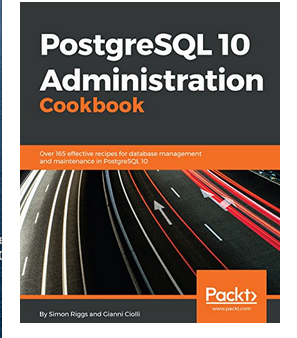
A practical guide to administer, monitor and replicate your PostgreSQL 10 database
Key Features
Get to grips with the capabilities of PostgreSQL 10 to administer your database more efficiently
Monitor, tune, secure and protect your database for optimal performance
A step-by-step, recipe-based guide to help you tackle any problem in PostgreSQL 10 administration with ease
Book Description
PostgreSQL is a powerful, open source database management system with an enviable reputation for high performance and stability. With many new features in its arsenal, PostgreSQL 10 allows users to scale up their PostgreSQL infrastructure. This book takes a step-by-step, recipe-based approach to effective PostgreSQL administration.
Throughout this book, you will be introduced to these new features such as logical replication, native table partitioning, additional query parallelism, and much more. You will learn how to tackle a variety of problems that are basically the pain points for any database administrator - from creating tables to managing views, from improving performance to securing your database. More importantly, the book pays special attention to topics such as monitoring roles, backup, and recovery of your PostgreSQL 10 database, ensuring high availability, concurrency, and replication.
By the end of this book, you will know everything you need to know to be the go-to PostgreSQL expert in your organization.
What you will learn
Get to grips with the newly released PostgreSQL 10 features to improve database performance and reliability
Manage open source PostgreSQL versions 10 on various platforms.
Explore best practices for planning and designing live databases
Select and implement robust backup and recovery techniques in PostgreSQL 10
Explore concise and clear guidance on replication and high availability
Discover advanced technical tips for experienced users
Who this book is for
This book is for database administrators, data architects, developers, or anyone with an interest in planning for, or running, live production databases using PostgreSQL. It is most suited to those looking for hands-on solutions to any problem associated with PostgreSQL administration.
Table of Contents
First Steps
Exploring the Database
Configuration
Server Control
Tables and Data
Security
Database Administration
Monitoring and Diagnosis
Regular Maintenance
Performance and Concurrency
Backup and Recovery
Replication and Upgrades
《Troubleshooting PostgreSQL 》

About This Book
Detect and solve performance, indexing, and fuzzy matches problems and more in an effective way
Tune PostgreSQL databases and remove bottlenecks such as low performance queries, failed database connections, and transaction locks that slow down the systems
Hands-on guide with valuable troubleshooting solutions for PostgreSQL database administrators
Who This Book Is For
If you are a database administrator looking for solutions to common PostgreSQL problems, this is the book for you. The book is suitable for people with intermediate and professional expertise.
What You Will Learn
Detect bottlenecks caused by missing indexes
Optimize your data structures for optimal memory footprint
Write better, performance-optimized stored procedures
Monitor PostgreSQL in an efficient way and deal with system corruption and filesystem issues
Detect replication-related problems and make replication more failsafe
Fix missing indexes and problems arising out of transaction locking
Find slow queries and optimize your system for speed
In Detail
PostgreSQL is a powerful, open source, object-relational database system. PostgreSQL offers many advantages for your company or business over other database systems.
This book is your practical guide to understanding the advanced techniques used to handle complex data and methods to solve issues that you might face while working with PostgreSQL. We will start with discussing the issues that arise at the time of setting up PostgreSQL. The next step will be to decide which data types will be most suitable to the task at hand and optimize performance using the right ones.
We will understand how to deal with transaction locks, fuzzy matches, cursors, joins, and so on. Know the warning signs to look for, and how to avoid the most common issues before they even happen. In addition to that, specific high-level topics such as replication and Point-In-Time-Recovery will be discussed. The entire book is based on PostgreSQL 9.4 and contains up-to-date information.
《Mastering PostgreSQL 10》
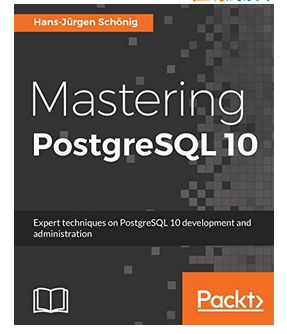
Key Features
Your one-stop guide to mastering advanced concepts in PostgreSQL 10 with ease
Master query optimization, replication, and high availability with PostgreSQL
Extend the functionalities of your PostgreSQL instance to suit your organizational needs with minimal effort
Book Description
PostgreSQL is an open source database used for handling large datasets (big data) and as a JSON document database. This book highlights the newly introduced features in PostgreSQL 10, and shows you how you can build better PostgreSQL applications, and administer your PostgreSQL database more efficiently. We begin by explaining advanced database design concepts in PostgreSQL 10, along with indexing and query optimization. You will also see how to work with event triggers and perform concurrent transactions and table partitioning, along with exploring SQL and server tuning. We will walk you through implementing advanced administrative tasks such as server maintenance and monitoring, replication, recovery, high availability, and much more. You will understand common and not-so-common troubleshooting problems and how you can overcome them. By the end of this book, you will have an expert-level command of advanced database functionalities and will be able to implement advanced administrative tasks with PostgreSQL 10.
What you will learn
Get to grips with the advanced features of PostgreSQL 10 and handle advanced SQL
Make use of the indexing features in PostgreSQL and fine-tune the performance of your queries
Work with stored procedures and manage backup and recovery
Master replication and failover techniques
Troubleshoot your PostgreSQL instance for solutions to common and not-so-common problems
Learn how to migrate your database from MySQL and Oracle to PostgreSQL without any hassle
Who this book is for
If you are a PostgreSQL data architect or an administrator and want to understand how to implement advanced functionalities and master complex administrative tasks with PostgreSQL 10, then this book is perfect for you. Prior experience of administrating a PostgreSQL database and a working knowledge of SQL are required to make the best use of this book.
Table of Contents
PostgreSQL Overview
Understanding Transactions and Locking
Making Use of Indexes
Handling Advanced SQL
Log Files and System Statistics
Optimizing Queries for Good Performance
Writing Stored Procedures
Managing PostgreSQL Security
Handling Backup and Recovery
Making Sense of Backups and Replication
Deciding on Useful Extensions
Troubleshooting PostgreSQL
Migrating to PostgreSQL
《PostgreSQL Replication - Second Edition》
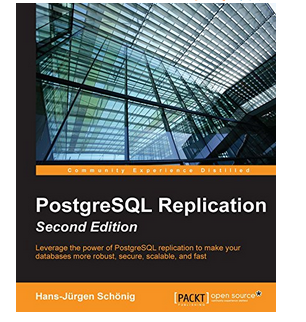
About This Book
Efficiently replicate PostgreSQL using high-end techniques to protect your data and run your server without interruptions
Improve reliability, fault-tolerance, and accessibility by maintaining consistency between redundant resources
Get grips with the latest version of PostgreSQL with this example-based guide
Who This Book Is For
This book is ideal for PostgreSQL administrators who want to set up and understand replication. By the end of the book, you will be able to make your databases more robust and secure by getting to grips with PostgreSQL replication.
What You Will Learn
Use Point-in-time Recovery to perform data recovery as well as replication
Set up synchronous as well as asynchronous streaming replication
Get familiarized with the transaction log, the core component of most replication setups and its purpose
Improve speed and reliability with an understanding of pgpool and PgBouncer
Increase your data security and geographically distribute data
Make your systems more available and secure with Linux High Availability
Scale out with PL/Proxy and Postgres-XC
Detect, investigate, and solve replication-related problems
In Detail
PostgreSQL offers a comprehensive set of replication related features. Unleashing the power of PostgreSQL provides you with countless opportunities and a competitive advantage over other database systems.
This book will guide you through the most important concepts of PostgreSQL replication. It contains all the information you need to design and operate replicated setups.
Beginning by giving you an understanding of replication concepts, the PostgreSQL transaction log, and Point-in-time Recovery, we gradually move on to setting up asynchronous and synchronous replication. Next up, you will learn to monitor a PostgreSQL cluster setup, deal with monitoring tools, and then move on to understanding Linux High Availability. Further, we explore widely-used tools such as Slony, SkyTools, Postgres-XC, and walbouncer, and set up PL/Proxy.
Finally, you'll get acquainted with the new technology of BDR, which allows bidirectional replication in PostgreSQL.
《PostgreSQL Server Programming - Second Edition》
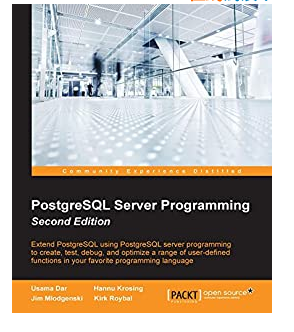
About This Book
Acquaint yourself with all the options to extend PostgreSQL using the programming language of your choice such as C++ and PL/Python
Work with PostgreSQL 9.4 so you can immediately take advantage of all the improvements and new features
Utilize the extensive code examples and many novel tips and tricks for maximum performance gain
Who This Book Is For
This book is for moderate to advanced PostgreSQL database professionals who wish to extend PostgreSQL, utilizing the most updated features of PostgreSQL 9.4. For a better understanding of this book, familiarity with writing SQL, a basic idea of query tuning, and some coding experience in your preferred language is expected.
What You Will Learn
Write functions in the built-in PL/pgSQL language or your language of choice
Define and use user-defined functions (UDF)
Scale your data with PL/Proxy
Extend PostgreSQL to overcome the limitations of classical SQL servers
Debug using NOTIFY and using PL/pgSQL debugging extensions
Discover the new features in PostgreSQL 9.4 such as event triggers and other improvements relevant to server-side programming
Fully integrate the database layer into your development
In Detail
This book will show you that PostgreSQL is so much more than a database server. In fact, it could even be seen as an application development framework, with the added bonuses of transaction support, massive data storage, journaling, recovery, and a host of other features that the PostgreSQL engine provides.
You will get to grips with creating libraries of useful code, grouping them into even more useful components, and distributing them to the community. Then, you will take a look at user-defined functions, and how to define and utilize them efficiently. You will also learn how to extract data from a multitude of foreign data sources and extend PostgreSQL to do it natively. What's more, you can do all of this in a nifty debugging interface that will allow you to do it efficiently and reliably. This book explores all possible ways to extend PostgreSQL and write server-side code using various programming languages with concrete and easy-to-understand examples.
(PostgreSQL High Availability Cookbook - Second Edition》
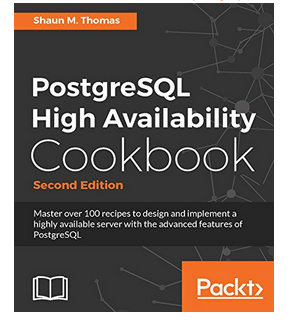
Book Description
Databases are nothing without the data they store. In the event of a failure - catastrophic or otherwise - immediate recovery is essential. By carefully combining multiple servers, it's even possible to hide the fact a failure occurred at all.
From hardware selection to software stacks and horizontal scalability, this book will help you build a versatile PostgreSQL cluster that will survive crashes, resist data corruption, and grow smoothly with customer demand. It all begins with hardware selection for the skeleton of an efficient PostgreSQL database cluster. Then it's on to preventing downtime as well as troubleshooting some real life problems that administrators commonly face. Next, we add database monitoring to the stack, using collectd, Nagios, and Graphite. And no stack is complete without replication using multiple internal and external tools, including the newly released pglogical extension. Pacemaker or Raft consensus tools are the final piece to grant the cluster the ability to heal itself. We even round off by tackling the complex problem of data scalability.
This book exploits many new features introduced in PostgreSQL 9.6 to make the database more efficient and adaptive, and most importantly, keep it running.
What you will learn
Protect your data with PostgreSQL replication and management tools such as Slony, Bucardo, pglogical, and WAL-E
Hardware planning to help your database run efficiently
Prepare for catastrophes and prevent them before they happen
Reduce database resource contention with connection pooling using pgpool and PgBouncer
Automate monitoring and alerts to visualize cluster activity using Nagios and collected
Construct a robust software stack that can detect and fix outages
Learn simple PostgreSQL High Availability with Patroni, or dive into the full power of Pacemaker.
About the Author
Shaun M. Thomas has been working with PostgreSQL since late 2000. He is a frequent contributor to the PostgreSQL Performance and General mailing lists, assisting other DBAs with the knowledge he's gained over the years. In 2011 and 2012, he gave presentations at the Postgres Open conference on topics such as handling extreme throughput, high availability, server redundancy, and failover techniques. Most recently, he has contributed the Shard Manager extension and the walctl WAL management suite. Currently, he serves as the database architect at PEAK6 Investments, where he develops standard operating procedure (SOP) guidelines to facilitate reliable server architecture among many other tasks. Many of the techniques used in this book were developed specifically for this extreme environment. He believes that PostgreSQL has a stupendous future ahead, and he can't wait to see the advancements subsequent versions will bring.
https://www.linkedin.com/in/bonesmoses
Table of Contents
Hardware Planning
Handling and Avoiding Downtime
Pooling Resources
Troubleshooting
Monitoring
Replication
Replication Management Tools
Simple Stack
Advanced Stack
Cluster Control
Data Distribution
《PostgreSQL Administration Cookbook, 9.5/9.6 Edition》
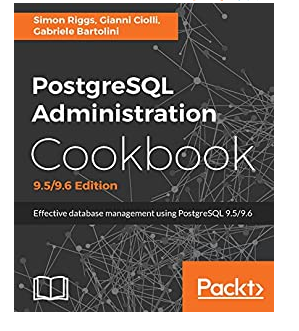
Book Description
PostgreSQL is a powerful opensource database management system; now recognized as the expert's choice for a wide range of applications, it has an enviable reputation for performance and stability. PostgreSQL provides an integrated feature set comprising relational database features, object-relational, text search, Geographical Info Systems, analytical tools for big data and JSON/XML document management.
Starting with short and simple recipes, you will soon dive into core features, such as configuration, server control, tables, and data. You will tackle a variety of problems a database administrator usually encounters, from creating tables to managing views, from improving performance to securing your database, and from using monitoring tools to using storage engines. Recipes based on important topics such as high availability, concurrency, replication, backup and recovery, as well as diagnostics and troubleshooting are also given special importance.
By the end of this book, you will have all the knowledge you need to run, manage, and maintain PostgreSQL efficiently.
What you will learn
Implement PostgreSQL features for performance and reliability
Harness the power of the latest PostgreSQL 9.6 features
Manage open source PostgreSQL versions 9.5 and 9.6 on various platforms
Discover advanced technical tips for experienced users
Explore best practices for planning and designing live databases
Select and implement robust backup and recovery techniques
Explore concise and clear guidance on replication and high availability
See the latest details on Logical Replication and Bi-Directional Replication
Table of Contents
First Steps
Exploring the Database
Configuration
Server Control
Tables and Data
Security
Database Administration
Monitoring and Diagnosis
Regular Maintenance
Performance and Concurrency
Backup and Recovery
Replication and Upgrades
《PostgreSQL 9 Administration Cookbook》
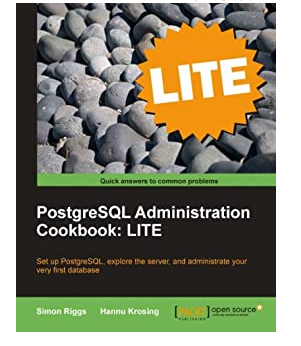
Written in the cookbook style, this book offers learning and techniques through recipes. It contains step-by-step instructions for administrators and developers to manage databases in PostgreSQL. The book is designed in such a way that you can read it chapter by chapter or refer to recipes in no particular order. This book is for Sysadmins, Database Administrators, Architects, Developers, and anyone with an interest in planning for or running live production databases.
《PostgreSQL Cookbook》
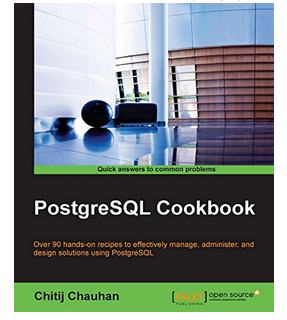
About This Book
Implement a highly available PostgreSQL database server and perform administrative and development functions with PostgreSQL
Perform database operations in PostgreSQL using Perl and Python
Step-by-step recipes focusing on providing real-world Postgresql solutions






